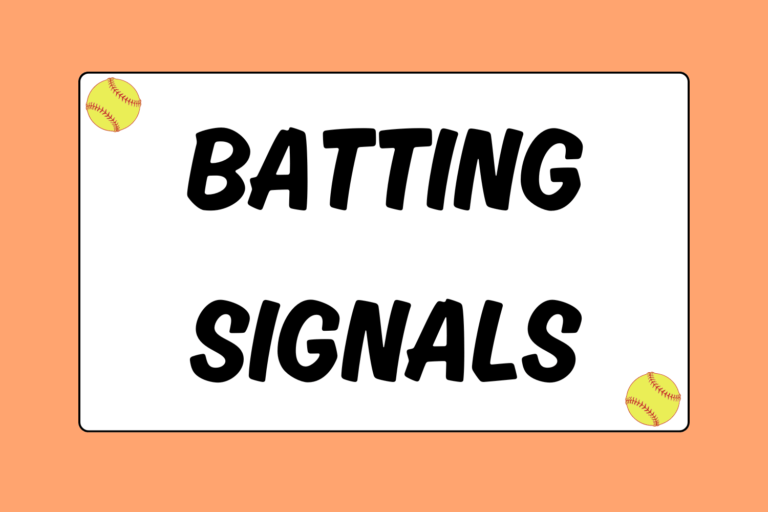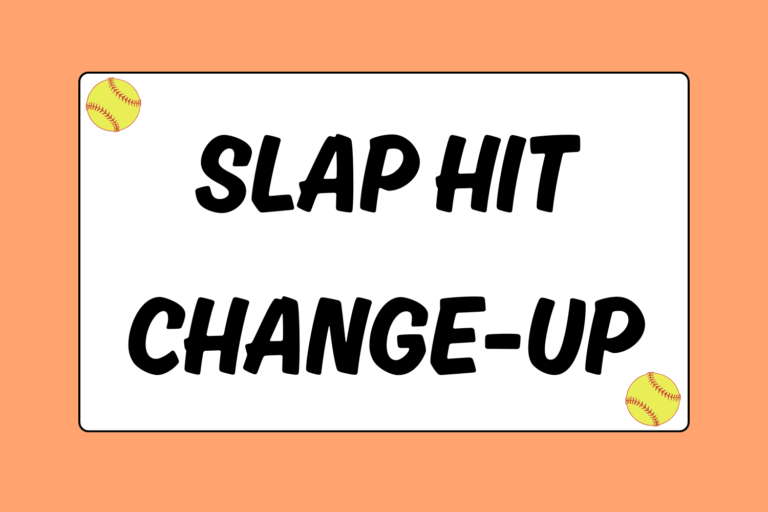To become a great pitcher, you have to take the time to learn every aspect of the windmill. A new pitcher won’t learn the proper fundamentals if she’s merely handed the ball and told to go to the mound. She needs to learn how to pitch first. This softball guide details specific drills that cover the first things a pitcher needs to learn: The wrist snap and proper upper body posture.
To make this guide easy to understand, all examples will be for right-handed pitchers. For left-handed pitchers, simply reverse the instructions in regards to arms and legs.
Step & Snap
This drill isolates the snap and drag motion:
- The pitcher will start roughly 5-10 feet in front of the plate, standing squared to the catcher. This means the pitcher’s shoulders, hips, and toes will all be pointing straight at the catcher. She will bring her right arm back just behind the waist, keeping her wrist cocked back.
- The pitcher will step forward with her left foot. Simultaneously, she will bring her right arm forward and start dragging her right foot (on the tippy toes, like a ballerina) forward.
- The ball is released as soon as it passes the pitcher’s hip. After she snaps her wrist, she will finish her drag by stepping forward so both feet are in line.
When performing the step and snap drill, it is important that the pitcher does not “chicken scratch,” which happens when the drag foot is kicked behind the front foot. If a pitcher develops this habit, she will have a hard time closing her back hip once she is on the mound. Have her focus on dragging her back foot straight forward in this drill.
Sideways Snap
This is often an alternate to the Step & Snap, and isolates only the snap part of the motion.
- The pitcher stands perpendicular to the catcher, roughly 5-10 feet in front of her. Her left shoulder will face the plate, and her feet should be set wide apart.
- She will start with her right arm just a few inches behind her hip, keeping her wrist cocked.
- She will bring her arm forward, snapping and releasing the ball at her hip. She will only shift her weight forward as she snaps her wrist; she will not step or drag her foot.
Hot Tip: How to Snap
Pitchers should never snap up to release the ball. Instead, have them think of closing a door with their wrist. This sideways snap is exactly what they’ll need for pitching. The ball will roll off their fingertips, just like a regular throw.
One-Knee Windmill
This drill introduces the windmill motion, and also continues to focus on the snap.
- The pitcher will start 10-15 feet in front of the catcher. She will kneel on her right knee, keeping her torso completely upright.
- The pitcher will bring her arm backward just past her hip for negative momentum, and then bring it forward to finish the windmill.
- She will snap and release the ball at her hip.
It’s important that the pitcher remains completely upright in this drill for two reasons:
- If she leans her body back, her release will likely be too late and as a result, she will throw a high ball.
- If she leans too far sideways, she will throw from underneath her body, often resulting in a ball being thrown wide.
Also, pay specific attention to her windmill; she needs to keep her arm close to her body. New pitchers often throw their arm too far behind their backs, rather than keeping the windmill to their side. A quick remedy for this is to have the pitcher practice her windmill next to a wall (standing so her throwing arm is closest to it.) If she brings her arm behind her back and then outward, she’ll know because she’ll hit the wall.
One-Legged Balance
This drill focuses on balance. When driving off the mound, pitchers need to stay balanced and upright throughout the entire motion.
- The pitcher will stand 10-15 feet away from the catcher. The pitcher will stand on her right leg. She will bend her left knee and raise it until her leg forms a right angle above the ground. Her lower leg will dangle perpendicular to its upper half.
- The pitcher will then bring her arm backward just past her hip for negative momentum, and then forward to perform the windmill.
- The pitcher will snap and release the ball at her hip. After the ball is released, she can momentarily put her foot back on the ground.
Hot Tip: Point at the Catcher!
A lot of young pitchers tend to bring their arms up after releasing the ball, as if they were bowling. This motion can cause a problem with the release if they start doing this before learning how to snap. By doing this, they will either snap too early or too late. An easy fix for this is to have the pitcher point at the catcher’s glove after releasing the ball. This can also help a pitcher who is having problems throwing straight. If she has to point at the glove, she will be more likely to release the ball right at her hip.
Sideways “K”
This drill focuses on opening the body after the pitcher drives off the mound. Pitchers start squared to the catcher, opening their bodies only after they lunge off the mound. Too many pitchers stay opened and kick — rather than drag — their foot behind them. This drill will help eliminate the habit to “chicken scratch.”
- Standing about 15-20 feet away from the catcher, the pitcher will start with her left shoulder facing the plate, feet together.
- She will bring her right arm backward, as far as she feels comfortable, for negative momentum. Some pitchers bring it all the way overhead (almost in line with their shoulder); this is fine.
- She will then bring her arm forward in the windmill (if her arm is all the way overhead, this will not be a full windmill), simultaneously pushing off the ground and lunging forward with her left foot.
- Her right foot will drag behind her. She will close her back (right) hip as she snaps to release the ball at her hip.
- To complete the pitch, she should step her drag foot forward so it lands in line with her left foot.
One-Knee, Double Windmill
This drill isolates the windmill and snap (without the use of the legs) from a farther distance. This will force the pitcher to snap even harder, helping her to eventually progress to being able to pitch from the full distance.
- About 10 feet in front of the mound, the pitcher will kneel on her right knee, keeping her torso completely upright.
- The pitcher will bring her arm backward just past her hip for negative momentum, and then bring it forward to perform two windmills. Her first windmill should be slightly slower than her second to gain momentum.
- She will snap and release the ball at her hip.
Be Committed
These drills focus on the most fundamental aspects of pitching. If a pitcher can successfully learn and execute these drills, she will have no problem moving on to the drills that focus on forward momentum and drive. And remember, speed will come. Pitchers need to worry more about throwing straight than throwing hard. Focusing on these drills will put any pitcher on the right path to becoming an ace on the mound!





